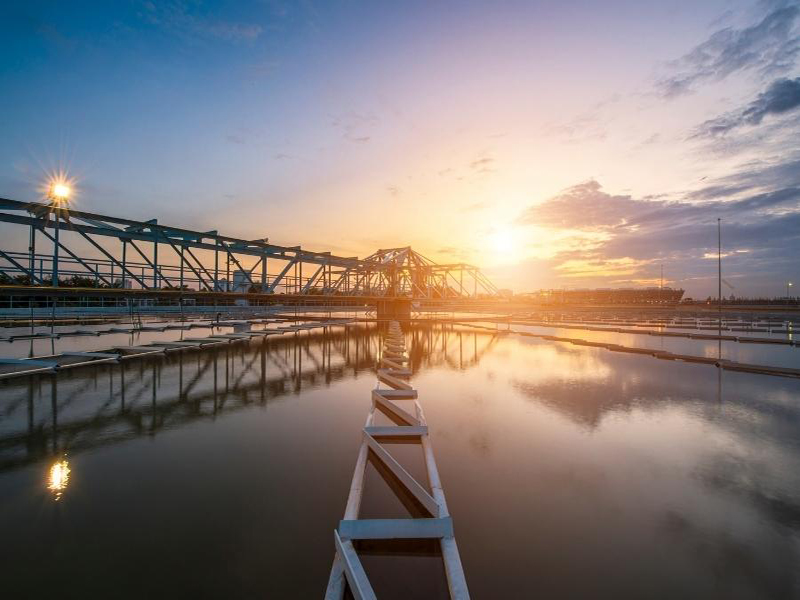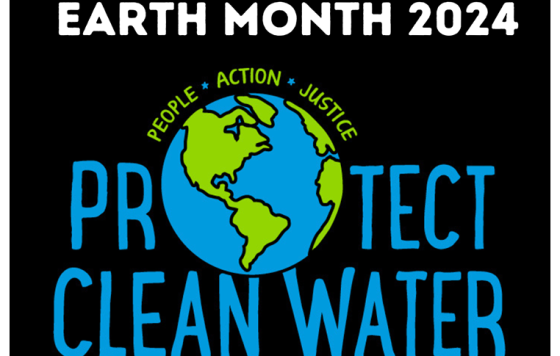
In his March State of the Union address, President Biden said “We are going to have an infrastructure decade.” This prediction has begun to come to fruition for America’s water systems. The Bipartisan Infrastructure Investment and Jobs Act was signed into law on November 15th of 2021, and promises to dramatically improve drinking water, stormwater, and wastewater systems. The unprecedented investment in water infrastructure baked into the act has the potential to transform communities that have long been overlooked. Implementation of the act will be tricky, and will require vigilance from water advocates.
The Need for Water Infrastructure Investment
America’s water infrastructure has long been in a state of disrepair. Outdated, leaking, and dangerous - water systems are ecological and human health disasters waiting to happen. The Army Society of Civil Engineers (ASCE) puts together a yearly report card on infrastructure - and water consistently does very poorly. This last year drinking water, stormwater, and wastewater received grades of C-, D, and D+ respectively. The depletion of water infrastructure in America is largely due to a lack of investment. In 2019, ASCE did a study that found that total capital spending on water infrastructure falls short of annual needs, and by 2039 the investment gap will have increased to $136 billion annually. The more water infrastructure deteriorates the more a public health timebomb looms across every community.
How the Bipartisan Infrastructure Investment and Jobs Act Can Help
The Bipartisan Infrastructure Investment and Jobs Act (IIJA) presents an opportunity to course correct what has become a serious public health and environmental crisis. IIJA provides unprecedented levels of investment in water infrastructure. This is the largest investment in water infrastructure in America’s history and it will be transformative for countless communities. Billions of dollars will soon be funneling into neighborhoods with the distinct purpose of improving water quality and health.
Through the act, $50 billion will be allocated across 5 years to improve water quality. Much ($23.4 billion) of this new funding will be administered through the state revolving fund (SRF) programs. The SRFs are partnership loan programs between the federal government and the states, tribes and territories (states). The purpose of the SRFs is to provide water quality projects with low-interest loans. The United States Environmental Protection Agency (EPA) provides the funds (through capitalization grants) and eligibility guidance. States administer the programs and provide the loans to projects. SRFs have been a source for communities to fund water quality programs since 1987. New provisions under the IIJA have clarified that mission. In accordance with President Biden’s commitment to environmental justice, 49% of the funds administered through the IIJA SRF allocations must benefit “disadvantaged communities.” $15 billion additional funds will also be allocated through the drinking water SRF with the explicit intent of replacing lead service lines.
How EPA is Working to Help Communities
The Biden Administration has taken this commitment to improving water infrastructure a step further. EPA put out a “memorandum to the states” regarding how best to implement the funds. The Bipartisan Infrastructure Law SRF Implementation Memorandum outlines areas for states to consider when administering SRF dollars. By law, the states have much leeway in how they administer SRF funds. This state administered approach has led to a few areas where SRF programs were not behaving as intended.
One area of potential confusion is how states define “disadvantaged community”, and who is eligible for subsidies within the SRFs. EPA’s approach has previously been “hands off” regarding this, with many states creating bare minimum definitions that do not address the inequities in water infrastructure. The memorandum seeks to provide guidance to the states on what communities should be eligible to receive the guaranteed 49% allocation of funds. This guidance will help states understand that they can expand definitions, and not merely address affordability concerns.
The largest barrier for communities isn’t always funding. Often those seeking SRF dollars do not know how to get them, and when they do, they do not have the technical knowledge to commit to filing an application. EPA’s memo seeks to alleviate these problems. By ensuring that 2% of the funds received to the states go toward technical assistance programs and outreach, EPA has ensured that communities that were never able to apply, but desperately need water infrastructure funding, will now have the capability to do so.
Most importantly for lead line service replacement, EPA’s memo communicates that IIJA dollars cannot be spent on partial lead line replacement. Partial replacement is typically a massive waste of dollars and capacity as it does not get at the root cause of lead in drinking water. EPA’s guidance will lead to more equitable water infrastructure systems, not just from the IIJA, but for the foreseeable future.
There is More Work to Be Done
The Bipartisan Infrastructure Investment and Jobs Act is the first step in closing the infrastructure investment gap. Water infrastructure is intrinsically tied to climate resiliency and human health. It will be crucial for future federal budgets to continue investments put forth through the IIJA. Future investment must include climate resiliency and water equity as a focus. The new funds for lead service line replacement are needed, but will not be enough to reach the president’s goals of fixing every lead service line, a cost that is expected to be as high as $45 billion.
There is still work to do. Despite EPA’s efforts, thoughtful implementation of the act is not guaranteed. Diligent engagement will be required to ensure that SRF dollars are reaching at-risk communities. Per EPA’s instructions, many states will soon be rewriting Intended Use Plans. These plans outline a state’s priorities for the upcoming year, such as what that state considers a disadvantaged community. Now is the time to see what outreach your state is putting forth as they write these plans. When engaging with state actors, advocates should be looking out to see:
- What definition is the state investment authority using for disadvantaged communities? Is it equitable? Does it seek to diminish historic injustices? Does it rely solely on broad demographic data such as median household income?
- How does the state investment authority plan on using technical assistance funds? Will there be construction loan programs to help small systems apply? Will there be outreach programs to reach systems that don’t have the capacity to research SRF allocations?
- How does the Intended Use Plan work to address climate resilience? Do the state’s priorities address local concerns such as flooding risks?
- What is the state authority’s plan for ensuring transparency? Will they allow easily accessible public data to ensure that disadvantaged communities were prioritized?
The wellspring of funds provided by IIJA creates a new world for water infrastructure. Despite there still being plenty of work to do, this level of investment should be celebrated. With vigilance and forward thinking, we can set in motion an infrastructure decade, one that is long overdue.



